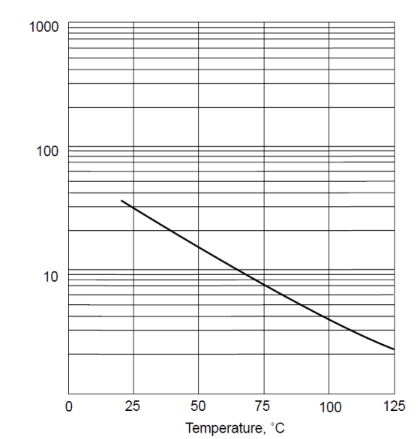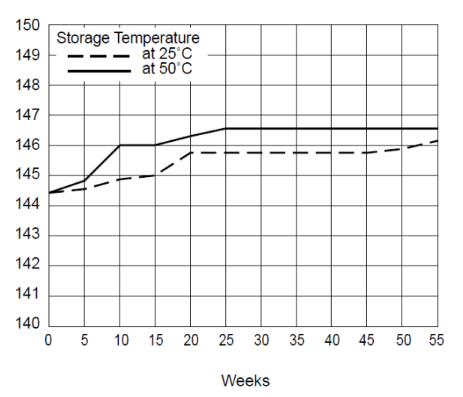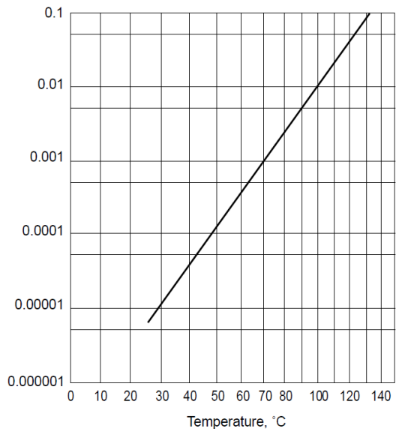Enhanced TDS
Identification & Functionality
- Chemical Family
- Country of Origin
- Tilley Product Number
- Technologies
- Product Families
Features & Benefits
- Labeling Claims
- CASE Ingredients Features
- Materials Features
Applications & Uses
- Markets
- Applications
- Applicable Processes
- Plastics & Elastomers End Uses
Properties
- Physical Form
- Typical Properties
Value Units Test Method / Conditions Isocyanate Equivalent Weight 144.5 g/mol - NCO Content 29.2 wt.% - Hydrolyzable Chloride 30 ppm - Acidity (as HCl) 0.002 % - Viscosity (at 25°C) 33 cps - Density (at 25°C) 1.214 g/mL - Vapor Pressure (at 25°C) max. 10⁻⁵ mm Hg - Extrapolated Boiling Point 314 °C - Approximate Decomposition Point 230 °C - Flash Point min. 177 °C ASTM D93, Closed Cup Specific Heat 0.43 g cal/g °C - Thermal Conductivity 0.0003 g cal/cm sec °C - Coefficient of Thermal Expansion 0.0009 kg/l/1°C - Heat of Vaporization 86 cal/g - Viscosity Growth (at 25°C) 2 - 5 cps/mo -
Regulatory & Compliance
- Certifications & Compliance
- Chemical Inventories
Technical Details & Test Data
- The 143L System

- Viscosity vs Temperature

- Isocyanate Equivalent vs Time

- Vapor Pressure vs Temperature

- Percent Dimer Concentration vs Time

- Half Life of Adducts vs Temperature
Temperatures °C (°F) Half-Life (Minutes)
120 (248) 10 100 (212) 58 80 (176) 450 60 (140) 4,500 40 (104) 50,000
Safety & Health
- Safety Information
-
ISONATE™ pure and modified MDI products are potentially hazardous materials and require care in handling. All persons who work with these materials must know and follow proper safe handling procedures.
First Aid
-
Diphenylmethane diisocyanate is irritating to the respiratory tract and can cause respiratory and skin sensitization in susceptible individuals. Although vapor pressure is low, there is the possibility that diphenylmethane diisocyanate (MDI) may exist in aerosol droplets, which may provide air concentrations that would be hazardous upon single exposure. These effects may be delayed. Decreased ventilatory capacity has been associated with exposure to similar isocyanates; it is possible that exposure to MDI may cause similar impairment of lung function. In case of inhalation exposure, remove to fresh air. Consult medical personnel.
-
MDI may cause eye and skin irritation. In case of eye contact, irrigate immediately and continuously with water for at least 15 minutes. Consult medical personnel.
-
In case of skin contact, wash off material in flowing water or shower. Remove contaminated clothing immediately and launder before reuse. Destroy contaminated shoes and leather items.
-
The single dose toxicities of pure and modified MDI are low. If ingested, do not induce vomiting. Consult medical personnel.
Handling
-
Workers should wear appropriate eye protection (safety glasses are considered a minimum requirement, and if there is the possibility of exposure to the eyes, it is recommended that chemical goggles be worn) and protective clothing impervious to MDI whenever MDI is used.
-
General or local exhaust ventilation should be provided to control airborne levels below the exposure guidelines.
-
The vapor pressures of pure and modified MDI are low at room temperature (< 1 x 10⁻⁵ mm Hg). However, at temperatures over 104°F (40°C), the vapor pressure increases enough that low functionality MDI products begin to constitute a toxic hazard.
-
Storage & Handling
- Storage Conditions
Storage
-
Drums of modified MDI must be protected from moisture contamination.
-
Exothermic generation of CO₂ may cause dangerous pressure build-up if contamination occurs.
-
If conditions favor polymeric growth, solids will form and will adversely affect product performance.
-
To prevent polymeric formation, ISONATE™ 2143L Modified MDI must be protected from exposure to water vapor or oxygen and from exposure to temperatures below 75°F (24°C) and above 105°F (41°C).
-
Recommended shipping and storage temperatures for ISONATE™ 2143L Modified MDI are 75°F to 105°F (24°C to 41°C).
-
If shipping or storage temperature should fall below 65°F (18°C), some crystallization could result.
-
Unless proper action is taken to re-form the original solution, subsequent dimerization will proceed quickly and will deteriorate the assay of the product.
Melting Instructions
-
If drum shipments of polymeric or modified MDI products arrive in a crystallized, frozen, or fused state, they should be promptly unloaded and heated as soon as possible.
-
Polymeric, pure, and modified MDI products that have been frozen will exhibit the same dimerization characteristics as pure MDI.
-
Unless proper action is taken to heat or melt the product, dimerization will proceed rapidly and deteriorate both the clarity and assay of the product.
-
While several methods for melting frozen or crystallized MDI have been developed, the method of choice should be one in which dimer formation is minimized.
-
This can best be accomplished by rapid, even heating of the drums.
-
The preferred method for heating drums is “drum rolling” (usually at 5 rpm on a mechanical drum roller) in atmospheric steam.
-
The principal advantage of this method is that it permits efficient heat transfer – that is, the solid MDI crystals cool the liquefied material so that the contents are not heated much beyond 70°C (158°F), the point at which dimer formation can increase significantly.
-
A frozen drum of polymeric, pure, or modified MDI, with a temperature between -4° to 32°F (-20° to 0°C), will usually melt completely (i.e., reach 70°C [158°F]) in approximately four to five hours.
-
While 70°C (158°F) is significantly higher than the recommended storage and handling temperature, it is necessary to reach this temperature, at least briefly, in order to melt the product both quickly and thoroughly.
-
Before heating, any opened drums should be reblanketed with dry nitrogen (-40°F [-40°C] dew point), and all drums, previously opened or not, should have bungs tightened securely.
-
Upon removal from the steam chest, residual heat will usually evaporate free water from the drum head.
-
The top of the drum should be wiped with a dry cloth.
-
Agitation and even heating is the key to maintaining quality during melting.
-
Dow does not recommend static melting in hot-air oven or with electric heating apparatus, or by hot-water bath.
-
Caution: The “drum rolling” procedure should be carefully monitored to prevent bumping, rubbing, or other conditions that could puncture or otherwise damage the drums.
Fire
-
Suitable fire extinguishing agents include water fog, foam, alcohol foam, carbon dioxide or dry chemical powder.
-
Isocyanates will burn but do not ignite easily.
-
In the event of a fire, toxic vapors and decomposed material are likely to be present.
-
All fire fighters should be equipped with protective clothing and a positive pressure, self-contained breathing apparatus.
-
Drums of isocyanate involved in a fire should be sprayed with water to minimize the risk of rupture.
-
Water contamination in a closed container or a confined area is to be avoided, due to exothermic CO₂ evolution upon water contamination.
- Spills and Disposal
-
In case of spills, evacuate and ventilate the spill area.
-
Only properly trained and protected personnel should be involved in the spill cleanup and waste disposal operations.
-
Spills can be covered with a commercial absorbent or sand, shoveled into open containers, properly labeled, and removed from the work area for decontamination with a suitable decontaminant solution.
-
Formulation 1: sodium carbonate 5–10%; liquid detergent 0.2–2%; water to make 100%.
-
Formulation 2: concentrated ammonia solution 3–8%; liquid detergent 0.2–2%; water to make 100%.
-
If ammonia is used, use good ventilation to prevent vapor exposure.
-
If you have any questions on how to neutralize, call The Dow Chemical Company.
-
All disposal methods of isocyanates must be in compliance with all federal, state/provincial, and local laws and regulations.
-
Regulations may vary in different locations.
-
The preferred options include sending to a licensed, permitted recycler, reclaimer, incinerator, or other thermal destructive device.
-
